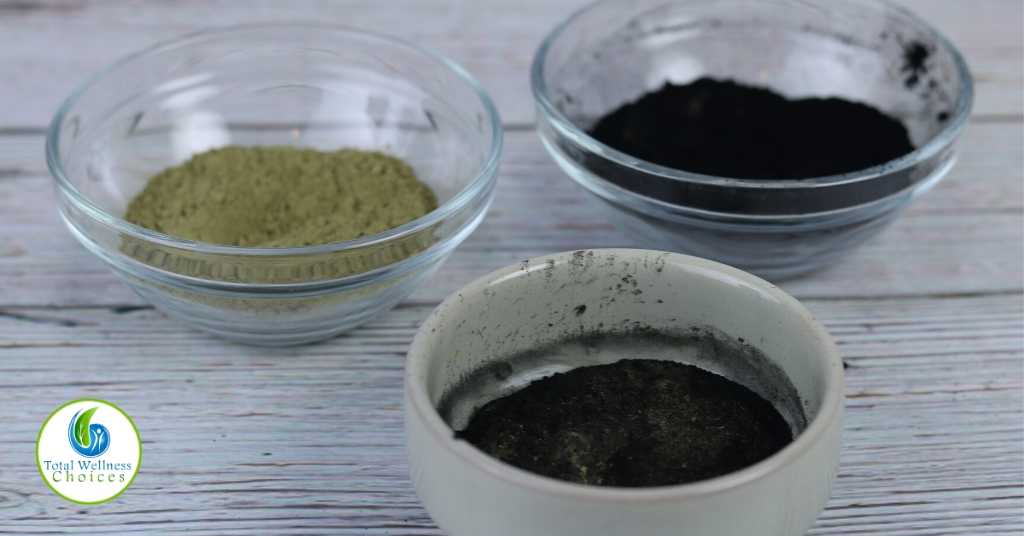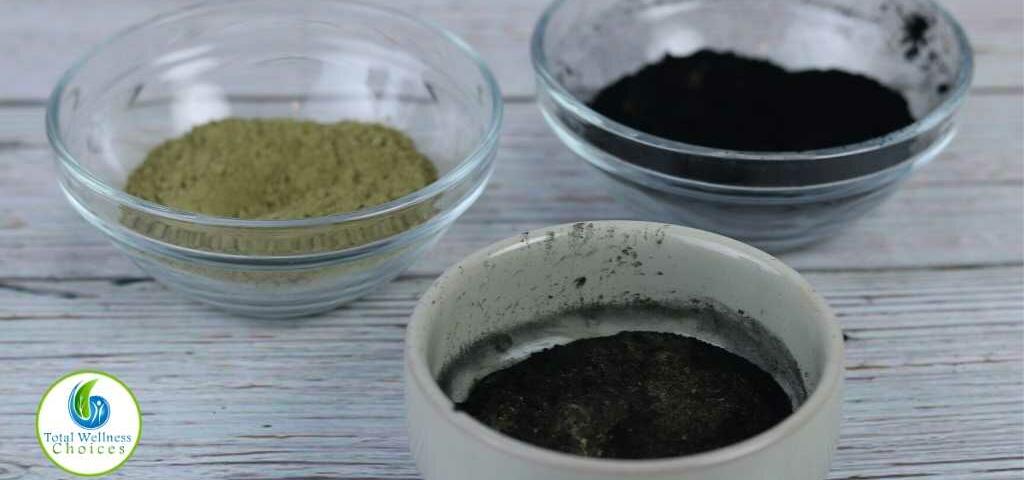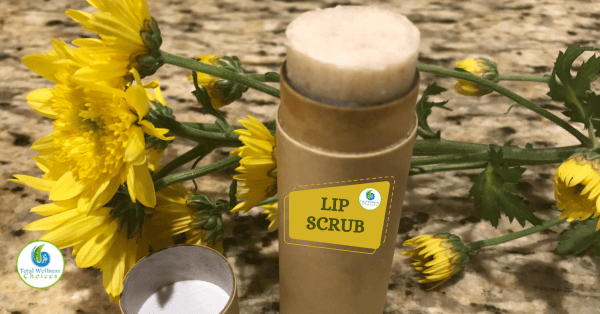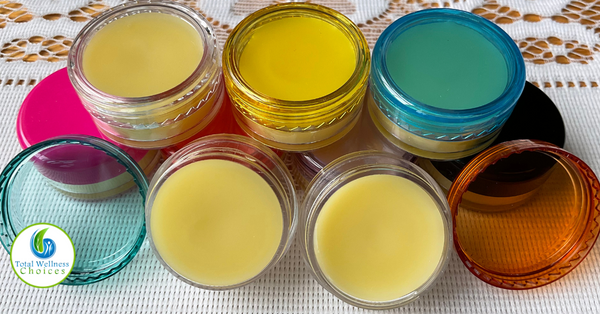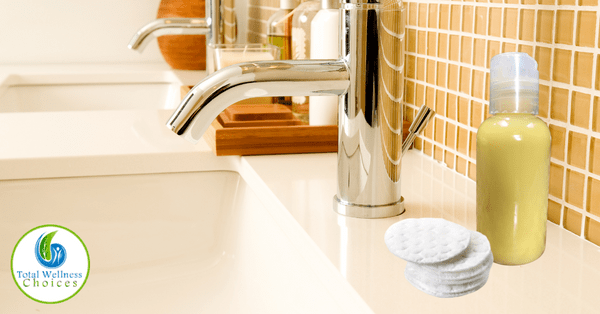DIY Charcoal and Matcha Green Tea Face Mask Recipe

How to Make Bath Melts with Rose Petals
January 14, 2020
Top 8 Essential Oils for Colds and Flu
February 5, 2020Homemade Charcoal and Matcha Green Tea Face Mask DIY Recipe!
How to make a charcoal and matcha green tea face mask. This easy charcoal and matcha green tea face mask DIY recipe is great for most skin types, and it’s especially wonderful for acne prone or oily skin. You can customize the recipe with your choice of carrier oil and essential oil.
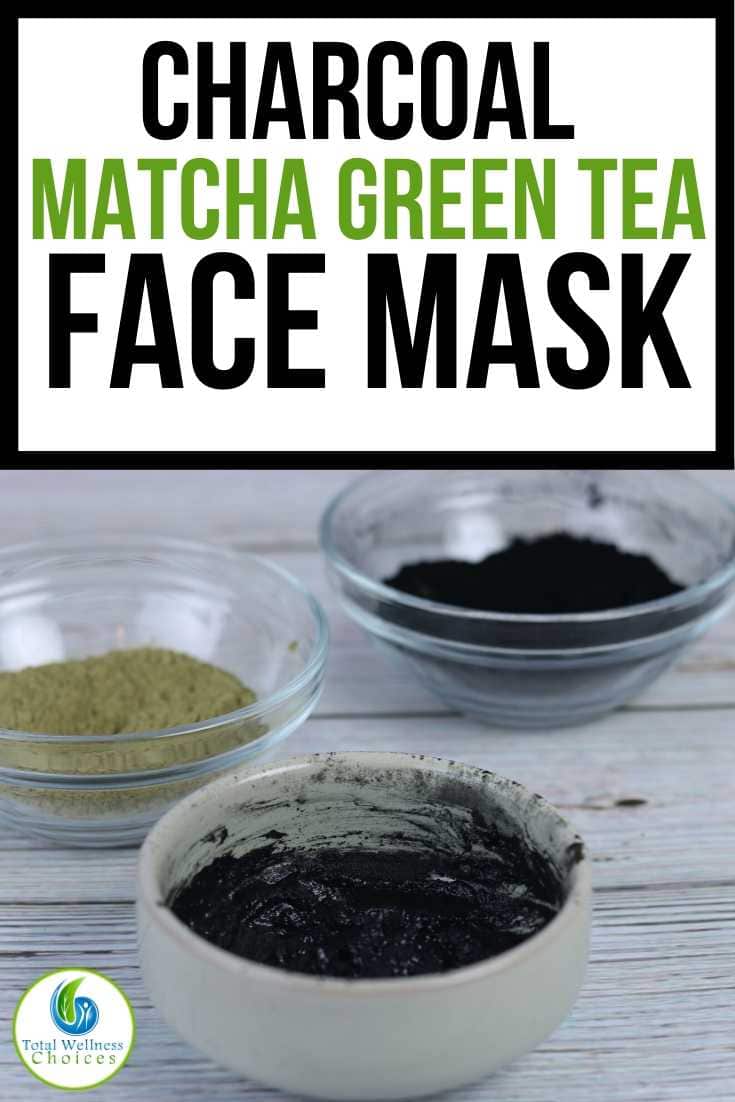
Most charcoal face mask recipes have some type of clay in them. These masks are great, but they can be too overly drying and cause redness.
Instead of using clay, I use matcha green tea powder. Green tea is high in antioxidants to naturally reduce the signs of aging.
This mask also has a carrier oil and an essential oil, and you can use the best ones for your skin type.
I also use apple cider vinegar to adjust the pH balance. Charcoal has a pH of 12-13, but the apple cider vinegar lowers the pH closer to your skin’s natural pH level of 5.5 to protect the acid mantle and help reduce acne.
This charcoal and green tea face mask is suitable for most skin types since it uses green tea instead of clay. It might be too drying to very dry skin, but if you have normal to oily skin, you’ll probably love this mask.
Related:
Ingredients for this Homemade Charcoal and Matcha Green Tea Face Mask DIY Recipe
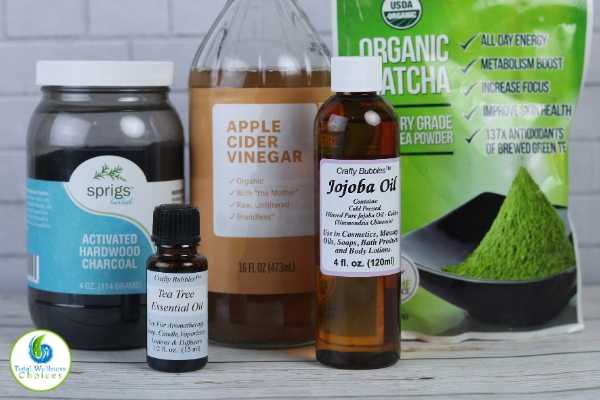
You can customize this charcoal and green tea face mask for your skin type by changing the carrier oil and essential oil. I’ll give you some options for the best ones to use for your skin type.
Matcha Green Tea Powder
Charcoal face masks are popular, and they sometimes have some type of clay in them. I prefer to mix my charcoal with matcha green tea for its many skin benefits.
Matcha green tea is made by grinding the entire tea leaf into a fine powder. This powder dissolves in water (or in apple cider vinegar for this recipe).
Matcha powder is very concentrated and high in Vitamins A, B-Complex, C, and K. It’s also very high in antioxidants for anti-aging properties.
Antioxidants combat free radicals that can lead to fine lines, wrinkles, and cell degeneration.
Green tea contains EGCG. EGCG can help repair DNA after it’s been exposed to UV rays from the sun. This can also help prevent signs of aging.
Matcha green tea also has some anti-acne properties. Green tea can help balance sebum production, which can help reduce clogged pores and acne.
It is also antimicrobial and anti-inflammatory to reduce inflammation and kill the bacteria that can lead to acne.
Activated Charcoal
Activated charcoal is wonderful for large pores or acne prone skin. It can absorb thousands of times its own weight, so it helps pull toxins and harmful substances from your skin for a clearer complexion.
When you rinse off this mask, it rinses away chemicals and toxins that were in the skin.
While you can’t permanently shrink your pores, charcoal can grab the excess oil and dirt from your pores and pull it out.
This helps your pores appear smaller for several days after you use this charcoal and green tea face mask.
If you have oily skin, charcoal grabs the oil and pulls it from your skin. Your skin won’t feel as oily for a day or two after using a charcoal mask.
Charcoal can be too drying, so for best results, use this mask only once a week.
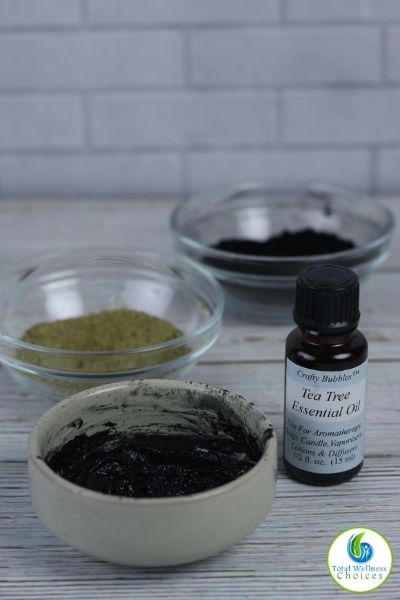
Carrier Oil
If you want to use an essential oil in this charcoal face mask recipe, you’ll have to dilute it in a carrier oil first. You’ll only use one drop of essential oil, but it can cause irritation if it’s not diluted.
I used jojoba oil. Jojoba oil is actually a wax and not an oil, but it behaves like an oil. It is very close to the sebum that your skin naturally produces, so it soaks into the skin quickly.
You can also use argan oil. Argan oil is a dry oil, so it soaks in quickly. It also helps hydrate the skin without making it too oily, so it’s a good oil for most skin types.
If you have oily skin, grapeseed oil is an excellent oil to use. It won’t clog the pores, and it soaks into the skin quickly. It’s moisturizing and can even act as an astringent to reduce oil on your skin.
If you use a carrier oil in this charcoal and green tea face mask recipe, it can be messy to take off because of the oil. I use it just before taking a shower and wash my face to remove the excess oil.
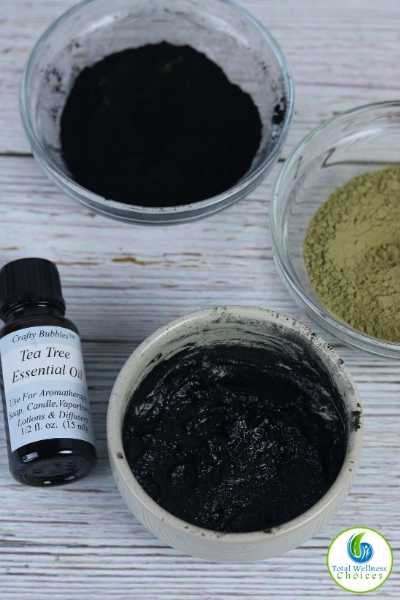
Essential Oils
Adding an essential oil is optional, but I like to add one drop with a carrier oil.
Lavender essential oil is a great oil for most skin types, including sensitive skin. It can help hydrate the skin and reduce inflammation.
Chamomile essential oil is also fairly mild. It can also help reduce inflammation.
Clary sage is a great essential oil for oily skin. It can help control excess oil and reduce the appearance of fine lines and wrinkles.
Frankincense has lipids that can help mature skin. It can help reduce oil production and reduce acne.
Tea tree oil is a great oil for acne prone skin. It’s naturally antimicrobial, so it can kill the germs that can lead to acne.
Raw Apple Cider Vinegar
I use raw apple cider vinegar to make the mask because it helps balance pH levels. It does have a strong odor, but it goes away quickly.
I recommend diluting the apple cider vinegar with water or just using water for sensitive skin. Since the mask sits on your face for 15 minutes, ACV can irritate your skin if it’s not diluted.
Apple cider vinegar is naturally anti-inflammatory. It has natural alpha hydroxy acid and acetic acid to exfoliate the skin and unclog pores.
How to Make a Charcoal and Matcha Green Tea Face Mask
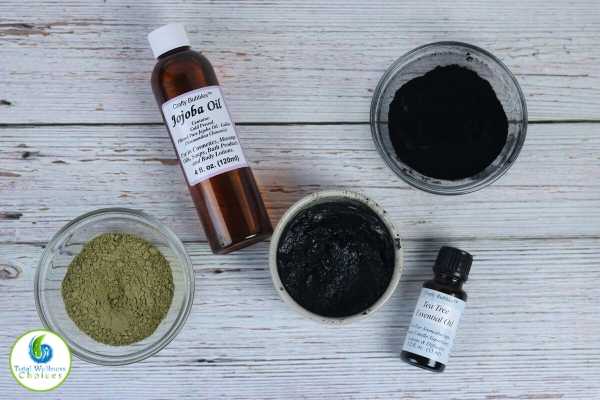
Ingredients
- 1 teaspoon matcha green tea powder
- 1 teaspoon activated charcoal
- 1 teaspoon jojoba oil
- 1 teaspoon raw apple cider vinegar
- 1 teaspoon water
- 1 drop tea tree essential oil (the brand I used is currently not on Amazon)
Directions
Place the matcha green tea powder and charcoal in a small bowl.
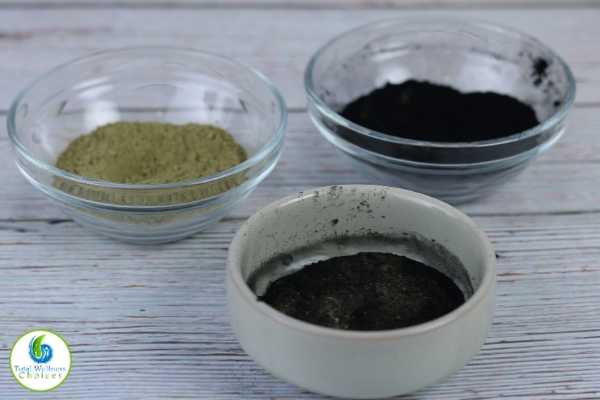
Combine the jojoba oil and one drop of essential oil in another small bowl and stir.
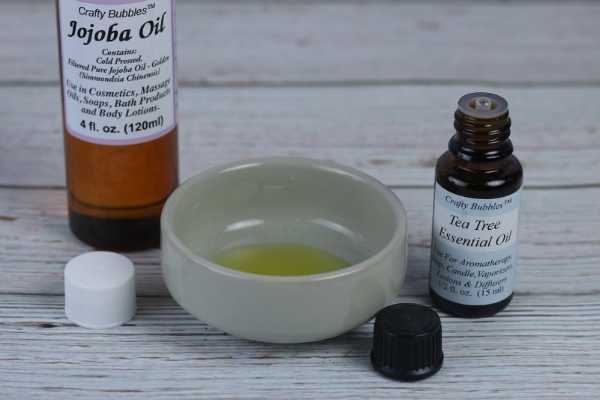
Add the carrier oil and essential oil to the powders. Add a teaspoon of raw apple cider vinegar and teaspoon of water. You can add more water until it’s the right consistency.
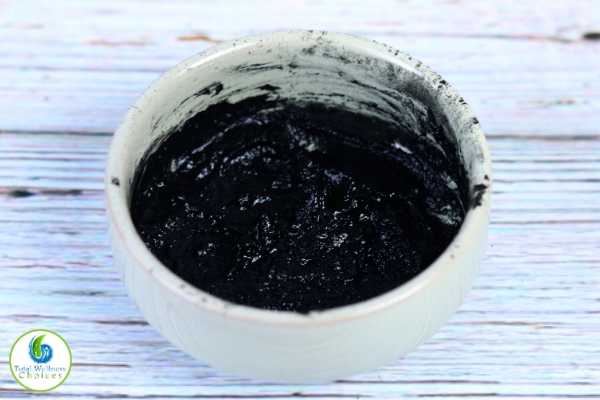
Use your fingers or a brush to apply to the face. Let sit for 10 to 15 minutes until dry. Rinse well and follow with your usual moisturizer.
Use this mask no more than once a week because it can be too drying. This recipe doesn’t have a preservative, so discard any leftovers.
If you have sensitive skin, this mask can cause redness. You may want to use water instead of apple cider vinegar to reduce the chance of redness.
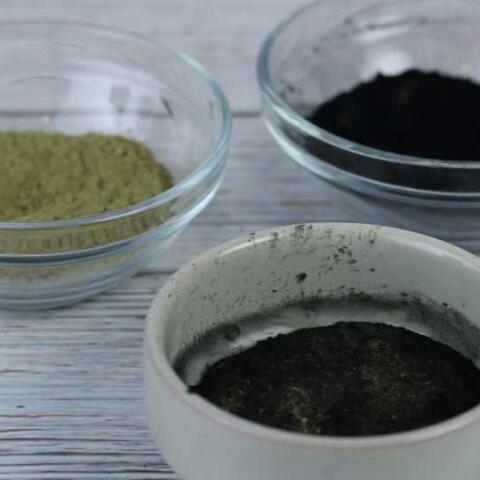
Charcoal and Matcha Green Tea Face Mask DIY Recipe
This easy to make charcoal and matcha green tea face mask DIY recipe is great for most skin types, and it’s especially ideal for acne prone or oily skin.
Materials
Instructions
- Place the matcha green tea powder and charcoal in a small bowl.
- Combine the jojoba oil and one drop of essential oil in another small bowl and stir.
- Add the carrier oil and essential oil to the powders. Add teaspoon of raw apple cider vinegar and teaspoon of water. You can add more water until it’s the right consistency.
- Use your fingers or a brush to apply to the face. Let sit for 10 to 15 minutes until dry. Rinse well and follow with your usual moisturizer.
Notes
If you have sensitive skin, you may want to use water instead of apple cider vinegar to reduce the chance of redness.
Now, go ahead and give this charcoal and matcha green tea face mask DIY recipe a try and tell us how it goes.
